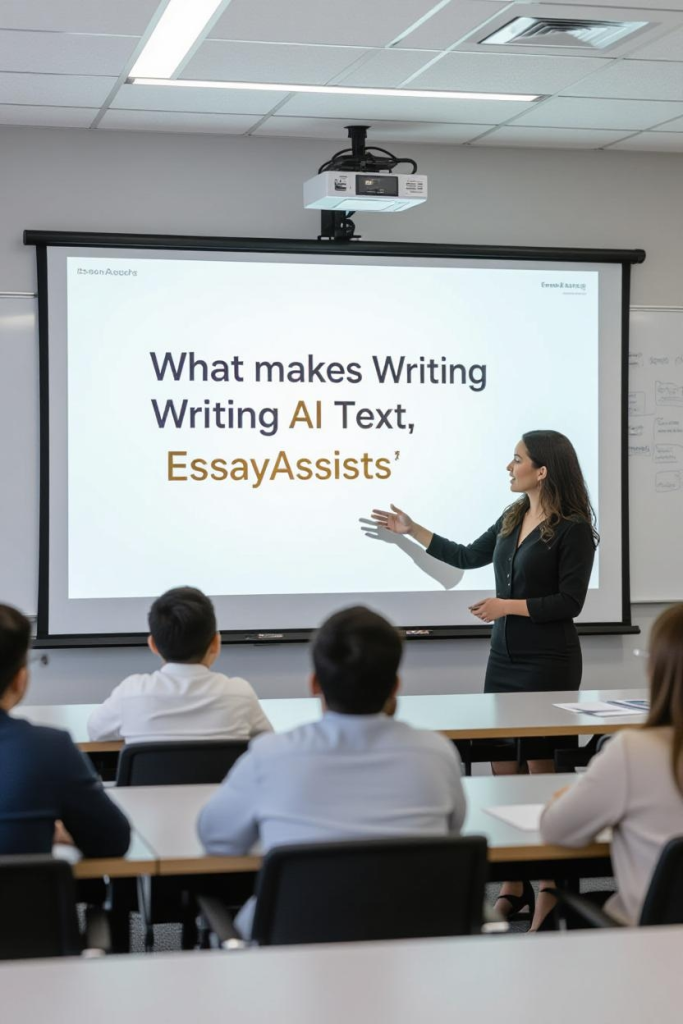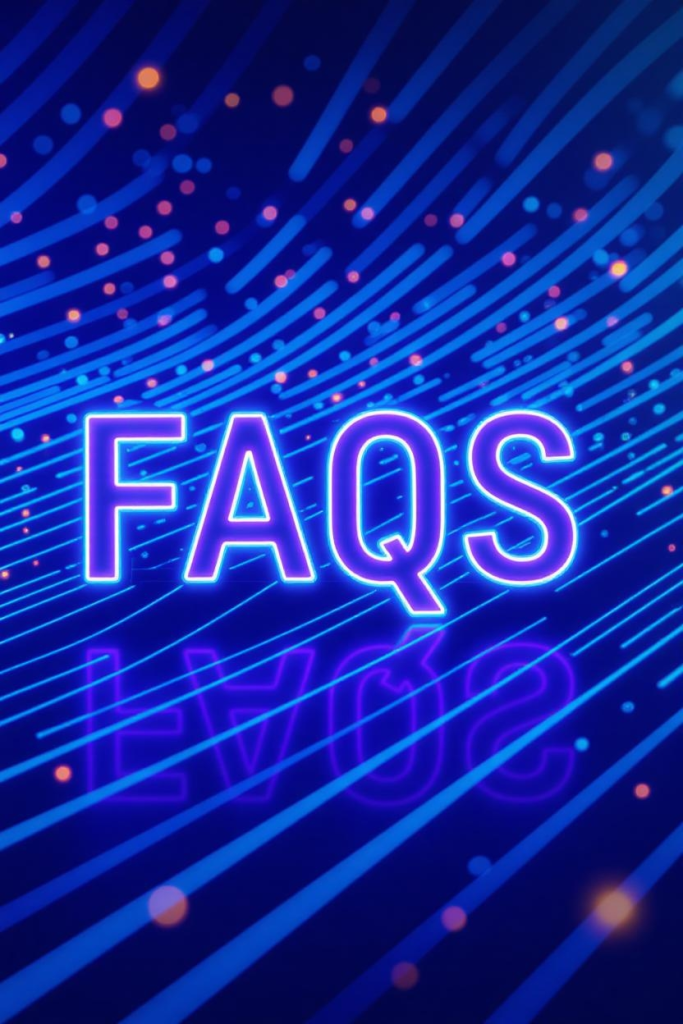
In today’s digital world, AI-powered writing tools have revolutionized content creation. From students drafting essays to professionals creating reports, AI makes writing faster and easier. But with this convenience comes a challenge: distinguishing human writing from AI-generated text. Many students and professionals worry about their work being flagged as AI content. In this blog, we’ll explore what makes writing appear AI-generated and how EssayAssists can help you maintain authenticity while improving your writing. visit essay Essayassits.com and get quality Human essays or get your AI generated papers humanized.
Why AI Detection Matters: Ensuring Authenticity in the Age of AI Writing
The rise of AI-powered writing tools has transformed the way we create content. From students drafting essays to professionals preparing reports, AI has made writing faster and more efficient. However, this convenience has introduced a new challenge: distinguishing between human-written and AI-generated content. This is where AI detection comes into play—and it matters more than you might think.
1. Understanding AI Detection
AI detection refers to the use of specialized tools and algorithms that analyze text to determine whether it was written by a human or an AI system. These tools are increasingly used by schools, universities, publishers, and businesses to ensure authenticity and maintain standards. Popular AI detection tools include:
- Turnitin AI Detection
- GPTZero
- Originality.AI
- Copyleaks AI Detector
By examining patterns in sentence structure, vocabulary, and tone, these systems provide a likelihood score indicating AI authorship
2. Why AI Detection Is Important
AI detection plays a crucial role in several areas:
a) Academic Integrity
For students, submitting essays or assignments generated by AI can be considered academic dishonesty. Detection tools help educators maintain fairness and ensure that submitted work reflects a student’s own understanding and effort.
b) Professional Authenticity
In business and journalism, original content is vital for credibility. AI detection helps organizations verify that reports, articles, or marketing materials are genuinely created by humans, preserving trust and reputation.
c) Preventing Plagiarism and Misuse
While AI-generated content can be helpful, it can also lead to plagiarism or misuse if passed off as original human work. Detection tools safeguard intellectual property and maintain ethical standards.
d) Encouraging Critical Thinking and Creativity
Relying solely on AI for writing can diminish creative and critical thinking skills. AI detection incentivizes humans to engage more deeply with their writing and ideas.
3. Common Challenges in AI Detection
While AI detection tools are increasingly used to identify machine-generated text, they are not perfect. Understanding their limitations is essential for writers, educators, and professionals who rely on these systems.
a) False Positives
AI detection tools sometimes flag human-written text as AI-generated. Highly polished, formal, or structured writing—common in academic essays and professional reports—can resemble AI patterns, leading to incorrect classification.
Example: A perfectly edited essay with precise grammar and consistent sentence structures may be flagged as AI-generated, even if it’s entirely human-written.
b) False Negatives
Conversely, AI-generated text can sometimes evade detection. Advanced AI models produce increasingly natural and nuanced text, making it harder for detection systems to identify machine-written content.
c) Overreliance on Patterns
AI detectors often analyze patterns in sentence length, word frequency, and grammar. However, not all human writing follows random or highly varied patterns. Skilled writers using consistent style may be unfairly flagged, while AI text mimicking human quirks may pass undetected.
d) Rapid Evolution of AI
AI writing tools continuously improve. Detection algorithms must constantly adapt to new AI writing styles, which means there’s often a lag between AI capabilities and detection accuracy.
e) Context and Subjectivity
Detection tools cannot always understand nuance, humor, sarcasm, or cultural context. Human writing that includes subtle meaning or creative expression may be misinterpreted as AI-like.
Takeaway:
AI detection tools are valuable for assessing authenticity, but they are not infallible. Writers should focus on producing high-quality, human-centered content, while platforms like EssayAssists can help ensure writing is polished, authentic, and less likely to be misclassified by AI detectors.
4. How EssayAssists Helps Maintain Human Writing Quality
In an era where AI detection tools are becoming standard, maintaining authentic, human-centered writing is more important than ever. EssayAssists is designed to help students, professionals, and content creators produce high-quality work that is clearly human in tone, style, and substance. Here’s how:
a) Personalized Writing Assistance
EssayAssists creates essays, reports, and articles tailored to your unique voice and perspective. By emphasizing your insights and reflections, your writing stands out as authentically human rather than generic or AI-like.
b) Varied Sentence Structure
AI-generated text often exhibits repetitive patterns. EssayAssists ensures your work incorporates a mix of sentence lengths, styles, and structures, making your writing more dynamic and natural.
c) Critical Thinking and Originality
Beyond grammar and syntax, EssayAssists focuses on content that demonstrates analysis, evaluation, and originality. Essays include thoughtful arguments, nuanced perspectives, and evidence-based reasoning—traits that AI rarely replicates convincingly.
d) Professional Editing
Even the most skilled writers can unintentionally produce AI-like patterns. EssayAssists editors review content to eliminate repetitive phrasing, enhance readability, and introduce subtle variations that make text appear naturally human.
e) Academic and Professional Integrity
EssayAssists ensures all content is 100% unique and plagiarism-free. By combining originality with human-style writing, your work is less likely to trigger AI detection tools while maintaining ethical standards.
f) Guidance for Writers
EssayAssists doesn’t just deliver polished essays; it also provides guidance on writing style, structure, and tone. This empowers you to develop your writing skills and produce content that naturally resists AI misclassification.
Takeaway:
By leveraging EssayAssists, you can confidently produce writing that is high-quality, original, and unmistakably human. Whether you’re submitting academic work, professional reports, or content for online platforms, EssayAssists ensures your writing maintains clarity, authenticity, and personal voice—all while minimizing the risk of being flagged by AI detection tools.
6. Traits That Make Writing Look Like AI Text

Even well-written content can sometimes be flagged as AI-generated if it exhibits certain patterns or characteristics commonly associated with AI writing. Understanding these traits can help writers avoid being misidentified and produce more authentic, human-like content.
a) Predictable Sentence Structure
AI-generated text often uses uniform sentence patterns, such as simple subject-verb-object constructions. Sentences may feel repetitive or overly structured, lacking the natural variation found in human writing.
Example:
- AI-like: “The experiment was conducted. The results were analyzed. The conclusion was drawn.”
- Human-like: “After conducting the experiment, we carefully analyzed the results, which led to an insightful conclusion.”
b) Overly Formal or Neutral Tone
AI tends to produce text that is grammatically correct and polished but can feel flat or impersonal. The writing may lack humor, emotion, or personal voice, giving it a robotic quality.
c) Excessive Use of Transitional Phrases
Connectors such as “however,” “therefore,” “in conclusion,” and “moreover” are frequently used by AI to link ideas. Overuse of these phrases can make text seem formulaic and less natural.
d) Repetitive Vocabulary and Phrasing
AI often reuses words, phrases, or sentence structures, especially in longer pieces of writing. This repetition can create a mechanical or monotonous tone.
e) Lack of Personal Insight or Examples
AI rarely incorporates genuine personal experiences, reflections, or anecdotes. Writing that feels generic or overly generalized can trigger AI detection.
f) Overly Polished Content
While editing and proofreading are essential, text that appears “too perfect” without minor errors, stylistic quirks, or varied punctuation can resemble AI writing.
g) Logical but Overly Obvious Progression
AI-generated content tends to follow predictable reasoning steps, presenting information in a way that’s logically correct but sometimes obvious or lacking subtlety.
By recognizing these traits, writers can adjust their style to sound more natural, incorporating personal voice, varied sentence structures, and nuanced insights. Services like EssayAssists can help refine your writing so it maintains clarity, professionalism, and authenticity—reducing the chances of being flagged as AI text.
Here are some characteristics that may trigger AI detection tools:
a) Predictable Sentence Patterns
AI often generates uniform sentences with simple structures, such as subject-verb-object or repetitive phrasing. Human writing, by contrast, varies naturally in flow and rhythm.
b) Overly Formal Tone
AI-generated text can sound neutral, polished, and slightly robotic. Lacking personal voice or emotional nuance, it may feel “too perfect.”
c) Excessive Use of Transitional Phrases
Connectors like “however,” “therefore,” and “in conclusion” are common in AI writing. Overusing these can make content appear artificial.
d) Repetitive Vocabulary
AI tends to repeat words or phrases, especially in long pieces of writing.
e) Lack of Personal Insight
7. How Human Writing Can Be Mistaken for AI

Even authentic human writing can sometimes be flagged as AI-generated. This can be frustrating, especially when your work is original and thoughtfully crafted. Understanding why this happens can help you avoid false positives and ensure your writing is recognized as genuinely human.
a) Highly Structured or Formal Writing
Academic essays, professional reports, or business documents often follow strict formats and polished language. AI detection tools may interpret the consistent structure, flawless grammar, and formal tone as AI-like, even if a human wrote it.
Example:
- Formal human text: “The research findings demonstrate a significant correlation between sleep deprivation and cognitive performance.”
- AI detectors may flag this because it is precise, concise, and stylistically uniform.
b) Overuse of Standard Phrases or Templates
Writers who rely heavily on templates, formulaic phrases, or standard transitions may inadvertently produce text that resembles AI-generated content. Common patterns like “In conclusion,” “It is evident that,” or “Research shows that” can trigger detection algorithms.
c) Exceptionally Polished Text
Human writing with minimal typos, perfect grammar, and flawless punctuation can look “too perfect.” AI detection tools often associate mechanical perfection with AI output, so a highly edited essay might raise flags.
d) Lack of Personal Voice
Some writers naturally maintain a neutral, objective tone, particularly in academic or technical writing. While professional, this style may resemble AI writing because it lacks personal anecdotes, emotional nuance, or unique phrasing.
e) Writing That Mimics AI Patterns
If a human writer consciously or unconsciously uses repetitive sentence structures, transitional phrases, or generic vocabulary—common in AI writing—the text can be mistaken for AI-generated content.
Takeaway:
Being flagged as AI-generated does not automatically mean your work is inauthentic. It often reflects patterns that AI detectors associate with machine-generated text. To reduce false positives, writers can incorporate personal voice, varied sentence structures, and human insights.
Platforms like EssayAssists can help ensure your work maintains a human touch while still being polished and professional, minimizing the risk of AI misclassification.
I can now draft the next section: “4. How to Make Your Writing Appear More Human” with actionable tips to address these AI-like patterns. Do you want me to do that next?
Even authentic human writing can be flagged as AI-generated, particularly if:
- It’s highly structured and formal.
- It mimics templates or “AI-like” phrasing (common in essays or reports).
- It’s polished with minimal typos or errors.
This is why professional guidance is essential for ensuring your writing balances clarity and authenticity.
4. Tips to Make Your Writing Appear More Human
Even the most skilled human writers can sometimes have their work flagged as AI-generated. By intentionally incorporating natural writing habits and personal touches, you can make your text unmistakably human. Here are practical strategies:
a) Add Personal Voice and Perspective
Inject your own experiences, opinions, and reflections. Sharing anecdotes or insights gives your writing a unique voice that AI rarely replicates.
Example:
- Generic AI-like: “Exercise is beneficial for physical and mental health.”
- Human-like: “I noticed that after starting my morning jogs, I felt more energetic and focused throughout the day.”
b) Vary Sentence Length and Structure
Mix short, punchy sentences with longer, complex ones. Vary sentence beginnings, use questions, and combine clauses to break repetitive patterns.
Example:
- AI-like: “The experiment was conducted. The results were analyzed. The conclusion was drawn.”
- Human-like: “We conducted the experiment carefully, analyzed the results, and discovered patterns that surprised us.”
c) Introduce Minor Imperfections
Humans naturally make minor stylistic quirks, pauses, or unconventional phrasing. Slight deviations from perfect grammar, occasional contractions, or informal expressions can make text feel more authentic.
d) Use Unique Word Choices and Idioms
Avoid repetitive vocabulary. Incorporate synonyms, figurative language, and idiomatic expressions. This adds personality and reduces AI-like repetition.
Example:
- AI-like: “He was very happy about the news.”
- Human-like: “He was over the moon when he heard the news.”
e) Limit Overused Transitional Phrases
While connectors like “however,” “therefore,” and “in conclusion” are useful, overusing them can make your writing formulaic. Use natural transitions instead, such as “what stands out is,” “this suggests that,” or “I found that.”
f) Review and Edit Thoughtfully
Even after writing, review your work to ensure it flows naturally. Look for sentences that sound mechanical, replace generic phrases, and add your own commentary or examples.
g) Leverage Professional Guidance
Using professional writing platforms like EssayAssists can help refine your work. EssayAssists ensures your writing reflects your personal voice, uses varied structures, and incorporates insights—helping your text feel natural while maintaining clarity and quality.
Takeaway:
Humanizing your writing is about balance—maintaining clarity and professionalism while allowing your unique voice, style, and perspective to shine. By applying these strategies, your work becomes more engaging, authentic, and resistant to AI detection flags.
I can now draft the next section: “How EssayAssists Helps Maintain Human Writing Quality” to tie your blog to the platform naturally. Do you want me to do that?
6. Conclusion
Getting flagged as AI text isn’t always about cheating—it’s often about patterns that resemble AI writing. By understanding these markers and working with professional platforms like EssayAssists, you can ensure your writing is authentic, engaging, and unmistakably human.
Whether it’s an academic essay, report, or professional content, EssayAssists provides guidance and editing that highlights your unique voice while maintaining clarity and quality.
AI detection matters because it protects authenticity, academic integrity, and professional credibility. While AI tools can be powerful aids, human judgment, creativity, and unique insight remain irreplaceable. Platforms like EssayAssists help writers maintain this balance, ensuring work is original, human-centered, and high-quality.
By understanding why AI detection matters, writers can navigate the modern writing landscape responsibly—leveraging technology without compromising authenticity.
With AI tools like ChatGPT, Jasper, and others, institutions, publishers, and companies now use AI detection systems to assess the originality and human quality of written work. Common AI detection tools include:
- Turnitin AI Detection
- GPTZero
- Originality.AI
- Copyleaks AI Detector
These tools analyze patterns in sentence structure, vocabulary, and tone to determine whether a piece of writing resembles AI-generated content.

Q1. Can EssayAssists help me avoid AI detection?
Yes. EssayAssists ensures your writing reflects your unique voice, uses varied structures, and contains personal insights, reducing AI-like patterns.
Q2. Is AI-generated content unethical to use?
Using AI for brainstorming or drafting is fine. Passing it off as entirely human-written in academic or professional work can be considered unethical.
Q3. How does EssayAssists improve my writing?
EssayAssists provides personalized writing assistance, critical editing, and guidance on structure, tone, and originality, ensuring your work is both high-quality and authentically human.
Q4. Does using AI tools always count as cheating?
Not necessarily. AI can be used for brainstorming or drafting, but passing AI-generated work as entirely human-written is unethical in academic and professional contexts.
